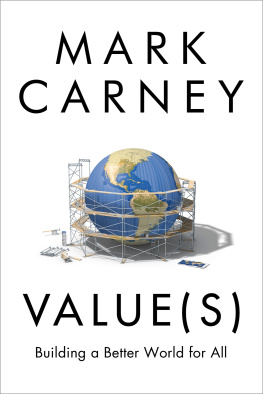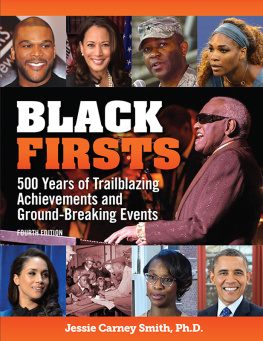Mark Carney - Value(S): Building a Better World for All
Here you can read online Mark Carney - Value(S): Building a Better World for All full text of the book (entire story) in english for free. Download pdf and epub, get meaning, cover and reviews about this ebook. year: 2021, publisher: McClelland & Stewart, genre: Politics. Description of the work, (preface) as well as reviews are available. Best literature library LitArk.com created for fans of good reading and offers a wide selection of genres:
Romance novel
Science fiction
Adventure
Detective
Science
History
Home and family
Prose
Art
Politics
Computer
Non-fiction
Religion
Business
Children
Humor
Choose a favorite category and find really read worthwhile books. Enjoy immersion in the world of imagination, feel the emotions of the characters or learn something new for yourself, make an fascinating discovery.
- Book:Value(S): Building a Better World for All
- Author:
- Publisher:McClelland & Stewart
- Genre:
- Year:2021
- Rating:4 / 5
- Favourites:Add to favourites
- Your mark:
- 80
- 1
- 2
- 3
- 4
- 5
Value(S): Building a Better World for All: summary, description and annotation
We offer to read an annotation, description, summary or preface (depends on what the author of the book "Value(S): Building a Better World for All" wrote himself). If you haven't found the necessary information about the book — write in the comments, we will try to find it.
Value(S): Building a Better World for All — read online for free the complete book (whole text) full work
Below is the text of the book, divided by pages. System saving the place of the last page read, allows you to conveniently read the book "Value(S): Building a Better World for All" online for free, without having to search again every time where you left off. Put a bookmark, and you can go to the page where you finished reading at any time.
Font size:
Interval:
Bookmark:


Copyright 2021 by Mark Carney
Hardcover edition published 2021
Signal and colophon are registered trademarks of Penguin Random House Canada Limited.
All rights reserved. The use of any part of this publication reproduced, transmitted in any form or by any means, electronic, mechanical, photocopying, recording, or otherwise, or stored in a retrieval system, without the prior written consent of the publisheror, in case of photocopying or other reprographic copying, a licence from the Canadian Copyright Licensing Agencyis an infringement of the copyright law.
Published simultaneously in the United Kingdom by William Collins, an imprint of HarperCollinsPublishers, and in the United States of America by PublicAffairs, an imprint of the Perseus Books Group.
Library and Archives Canada Cataloguing in Publication data is available upon request.
ISBN9780771051555
Ebook ISBN9780771051562
Cover design by Terri Nimmo
Cover image: Dieter Spannknebel / Digitalvision / Getty Images
Published by Signal, an imprint of McClelland & Stewart, a division of Penguin Random House Canada Limited,
a Penguin Random House Company
www.penguinrandomhouse.ca

a_prh_5.6.1_c0_r0
To Sasha, Amelia, Tess and Cleo
The car weaves silently through the City. When it reaches St Michaels Lothbury, it waits momentarily while security guards swing open giant steel gates, and it then rolls into the bullion yard. I get out, pass through an alarmed door, by enormous vaults, and up a granite staircase. I rub the nose of the lion adorning a brass portal as I enter the inner sanctum. I bid good morning to the pink-jacketed stewards, walk by portraits of my predecessors and step into the office of the Governor of the Bank of England.
Everything I see evokes the history of the Bank and the permanence of its mission. The entrance hall echoes the style of British imperial capitals. The corridors are lined with mosaics showing images of Roman coins and Mercury, the god of commerce. Lions the traditional guardians of treasure populate the gilded stair wells and front the doors.
The Governors office is much as it has been over the centuries. The desk has been in continual use since it was crafted by Sir John Soane in the eighteenth century. One wall is dominated by a gigantic Canaletto, depicting the Thames in the late seventeenth century. Floor-to-ceiling glass doors open on to a tranquil courtyard that preserves the seventeenth-century churchyard of St Christopher-le-Stocks.
There are symbols of money and value everywhere. Mulberry trees outside the windows allude to the earliest paper currency that was fashioned out of their bark. Mercurys winged head oversees the magnificent Court room where griffons guard the portals as steadfastly as they did the mythical pile of gold at the centre of the earth.
Theres real gold at the centre of the Bank. Beneath my feet, nine vaults with three-foot steel walls are filled with 5,500 tons of bullion that the market values at over $180 billion. Thats 5 per cent of all the gold ever mined since the dawn of humanity.
Everything appears solid, safe, permanent.
But all is not what it seems. The Empire is gone. The Union is under threat. Permanence is temporary. And value is an illusion.
Of Soanes original Bank of England an architectural masterpiece designed to stand for a millennium only the exterior walls, the state rooms and the desk remain. The Canaletto is now recognised as being of the school not by the master.
The gold lies pointlessly in our vaults, a vestige of a bygone era when it backed the value of money a link that became a cross, inspiring booms before triggering busts. Financial markets value gold for its perceived safety not for its revealed beauty. The gold price surges with fears of financial distress or geopolitical conflict. In such times of turbulence, faith in a commodity replaces trust in institutions.
Golds gyrations are a reminder that the permanence of the Bank of England relies on its values. And that value is built on values.
For over twelve years, I had the privilege and challenge of being a G7 governor, first in Canada and latterly in the UK. During this time I saw kingdoms of gold rise and fall. I led global reforms to fix the fault lines that caused the financial crisis, worked to heal the malignant culture at the heart of financial capitalism and began to address both the fundamental challenges of the Fourth Industrial Revolution and the existential risks from climate change. I felt the collapse in public trust in elites, globalisation and technology. And I became convinced that these challenges reflect a common crisis in values and that radical changes are required to build an economy that works for all.
Whenever I could step back from what felt like daily crisis management, the same deeper issues loomed. What is value? How is it grounded? Which values underpin value? Can the very act of valuation shape our values and constrain our choices? How do the valuations of markets affect the values of our society? Does the narrowness of our vision, the poverty of our perspective, mean we undervalue what matters to our collective wellbeing?
These are the questions that this book seeks to explore. It will examine how our society came to embody Wildes aphorism knowing the price of everything but the value of nothing. How by elevating belief in the market to an inviolable truth we moved from a market economy to a market society. And how we can turn this around.
In many respects, this book is a belated response to a question posed a few summers ago when a range of policymakers, business people, academics, labour leaders and charity workers gathered at the Vatican to discuss the future of the market system.
Pope Francis surprised us by joining the lunch and sharing a parable. He observed that:
Our meal will be accompanied by wine. Now, wine is many things. It has a bouquet, colour and richness of taste that all complement the food. It has alcohol that can enliven the mind. Wine enriches all our senses.
At the end of our feast, we will have grappa. Grappa is one thing: alcohol. Grappa is wine distilled.
He continued:
Humanity is many things passionate, curious, rational, altruistic, creative, self-interested.
But the market is one thing: self-interest. The market is humanity distilled.
And then he challenged us:
Your job is to turn the grappa back into wine, to turn the market back into humanity.
This isnt theology. This is reality. This is the truth.
This book draws on my experience in the private sector and public policy to examine the relationship between value and values. How they shape each other, and how, by doing so, they can determine our livelihoods, identities and possibilities. And how, once we recognise these dynamics, we can turn grappa back into wine.
The book is divided into three parts. Part I examines various concepts of value and their roots in political philosophy and, more recently and narrowly, in economic theory and financial practice. It uses a series of valuation paradoxes from art to the environment to illustrate the potential disconnects between valuations in markets and the values of society.
Font size:
Interval:
Bookmark:
Similar books «Value(S): Building a Better World for All»
Look at similar books to Value(S): Building a Better World for All. We have selected literature similar in name and meaning in the hope of providing readers with more options to find new, interesting, not yet read works.
Discussion, reviews of the book Value(S): Building a Better World for All and just readers' own opinions. Leave your comments, write what you think about the work, its meaning or the main characters. Specify what exactly you liked and what you didn't like, and why you think so.












